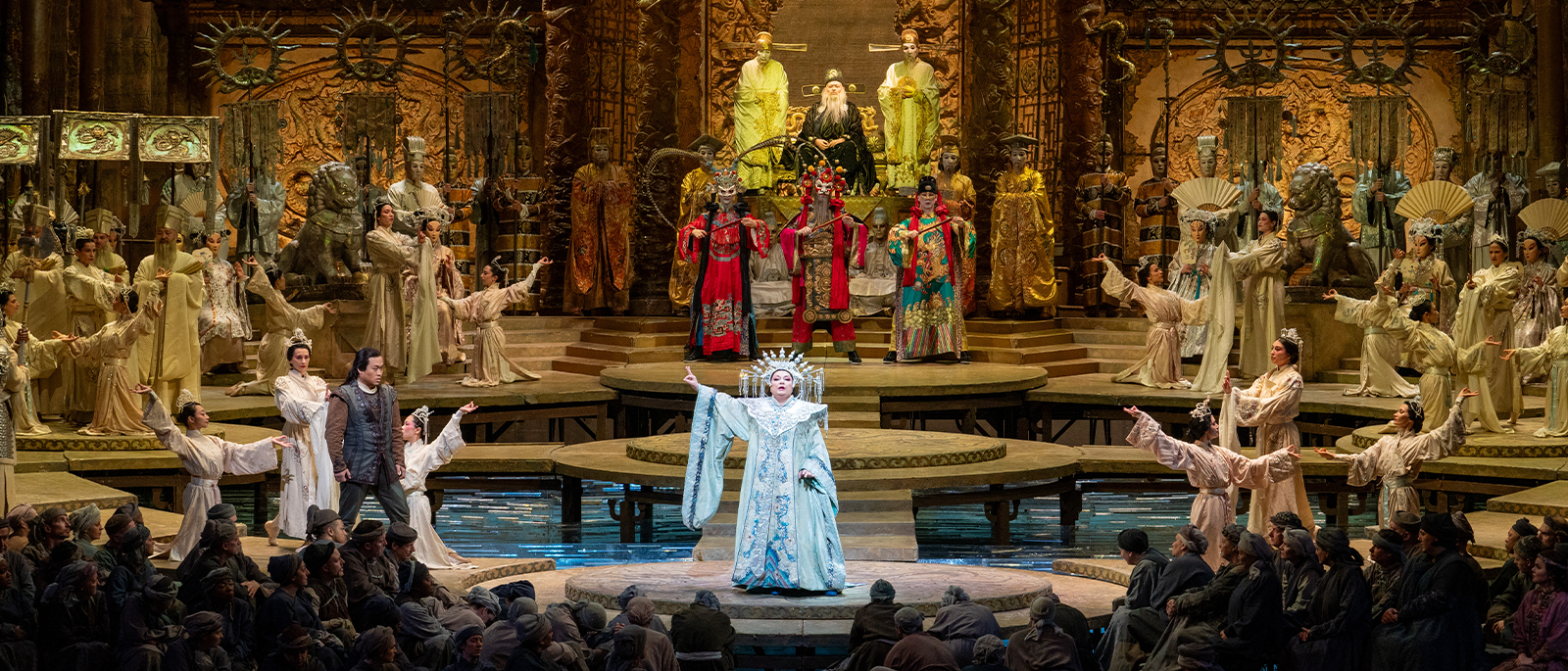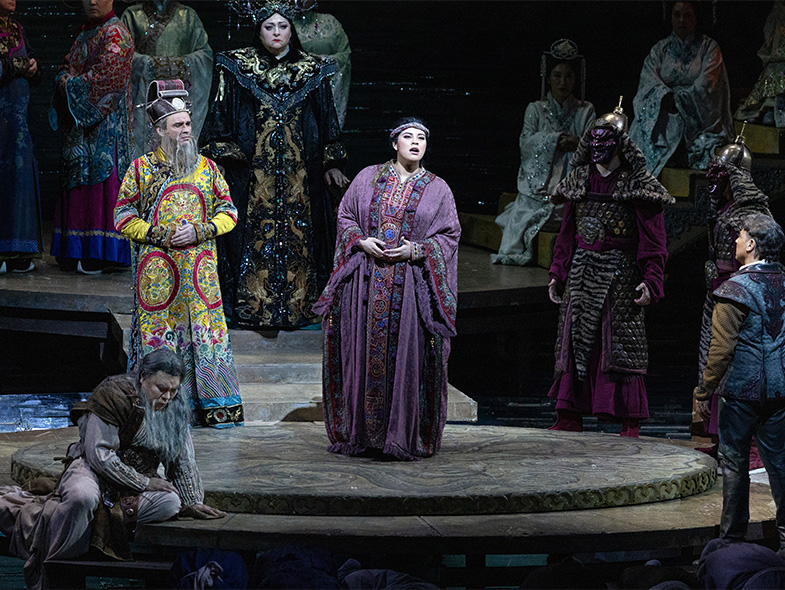
Giacomo Puccini
Turandot
This production ran: Feb 28 - Jun 7
This production is in the past.
$25 rush tickets are available for most performances and go on sale for Monday through Friday evening performances at noon, for matinees four hours before curtain, and for Saturday evenings at 2:00PM. Learn more about the Met's rush ticketing program here.
Overview
Franco Zeffirelli’s dazzling vision of mythic China retakes the stage, with soprano Elena Pankratova making her Met debut as the legendary—and lethal—title princess, opposite tenor SeokJong Baek as the valiant prince who puts his life on the line to win her love. Later in the spring, a pair of audience favorites, soprano Christine Goerke and tenor Roberto Alagna, assume the starring roles. Sopranos Aleksandra Kurzak, Juliana Grigoryan, Gabriella Reyes, Angel Blue, and Olga Kulchynska alternate as Liù, with basses Vitalij Kowaljow, Peixin Chen, and Soloman Howard as Timur. Maestro Oksana Lyniv makes her Met debut leading Puccini’s rousing score, sharing conducting duties with Marco Armiliato.
Production a gift of Mrs. Donald D. Harrington
Revival a gift of C. Graham Berwind, III and The Joseph and Robert Cornell Memorial Foundation
The Met is grateful to C. Graham Berwind, III for sponsoring the refurbishment of the Turandot sets
Languages
Languages sung in Turandot
Sung In
Italian
Titles
Title languages displayed for Turandot
Met Titles In
- English
- German
- Spanish
- Italian
Timeline
Timeline for the show, Turandot
Estimated Run Time
3 hrs 20 mins
-
House Opens
-
Act I
35 mins
-
Intermission
40 mins
-
Act II
50 mins
-
Intermission
30 mins
-
Act III
45 mins
-
Opera Ends

World premiere: Teatro alla Scala, Milan, 1926. Puccini’s final opera is an epic fairy tale set in a China of legend, loosely based on a play by 18th-century Italian dramatist Carlo Gozzi. Featuring a most unusual score with an astounding and innovative use of chorus and orchestra, it is still recognizably Puccini, bursting with instantly appealing melody. The unenviable task of completing the opera’s final scene upon Puccini’s sudden death was left to the composer Franco Alfano. Conductor Arturo Toscanini oversaw Alfano’s contribution and led the world premiere.
Creators
Giacomo Puccini (1858–1924) was immensely popular in his own lifetime, and his mature works remain staples in the repertory of most of the world’s opera companies. Franco Alfano (1875–1954) wrote nine operas, of which Cyrano de Bergerac (1936) is still occasionally performed today. The librettists for Turandot were the playwright Giuseppe Adami (1878–1946), who had previously worked with Puccini on Il Tabarro and La Rondine, and the journalist Renato Simoni (1875–1952).
PRODUCTION
Franco Zeffirelli
SET DESIGNER
Franco Zeffirelli
COSTUME DESIGNERS
Anna Anni and Dada Saligeri
LIGHTING DESIGNER
Gil Wechsler
CHOREOGRAPHER
Chiang Ching

COMPOSER
Giacomo Puccini
Videos
Setting

In Gozzi’s play, the original commedia dell’arte characters wandered from Italy to China and were members of the Imperial court. Their comments satirized Venetian politics and mores of the times. Puccini and his librettists dispensed with any such relevance. The China of this opera, set in “legendary times,” is a mythic realm viewed from the exoticizing perspective of 20th-century Europeans.
Music
The large Turandot orchestra calls for a wide variety of instruments, including alto saxophones, celesta, bass xylophone, harps, and an organ. There are several genuine Chinese themes that are integrated into the score in a suave and brilliantly original manner, including the big imperial anthem in Act II. The opera also contains moments of sheer melodic beauty in Puccini’s most lyrical vein, most notably in the tenor’s unforgettable song of triumph, “Nessun dorma,” which opens Act III.
